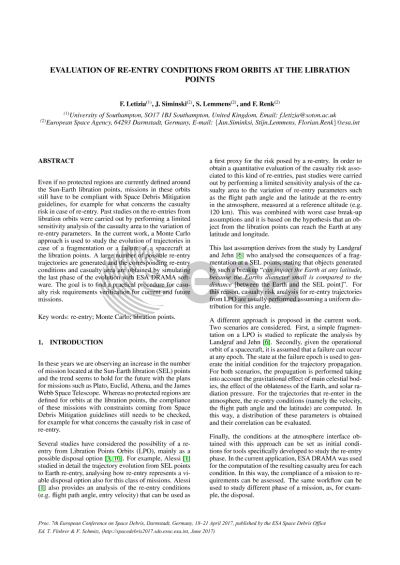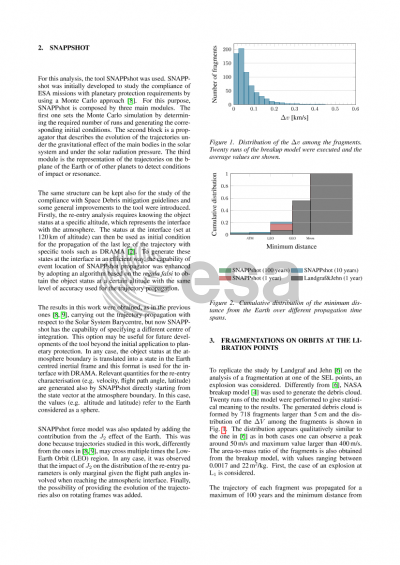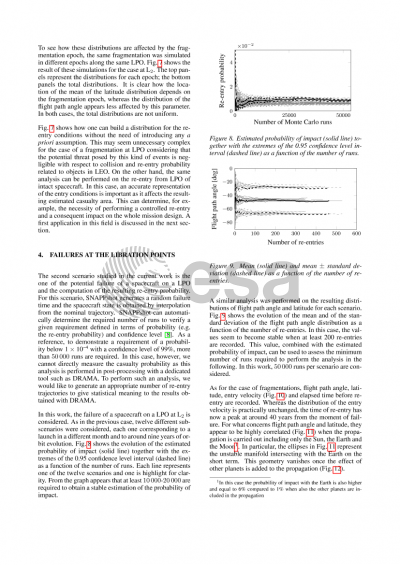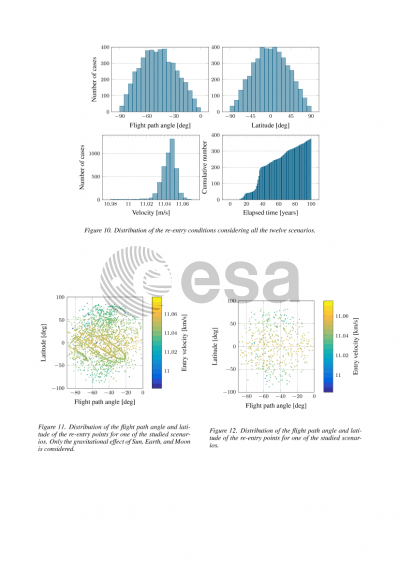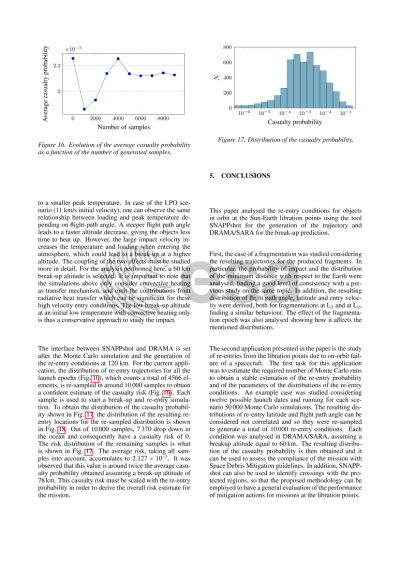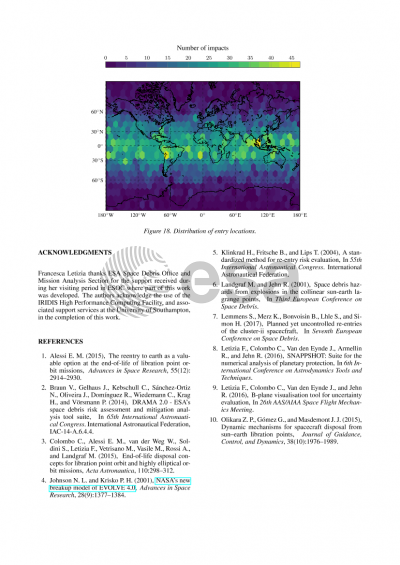Document details

Abstract
In these years an increase in the number of mission located at the Sun-Earth Lagrange (SEL) points was observed. The same seems to hold for the future with the plans for missions such as Plato, Euclid, Athena, and the James Webb Space Telescope. Whereas no protected regions are defined for orbits at the Lagrangian points, the compliance of these missions with constraints coming from Space Debris Mitigation guidelines still needs to be checked, for example for what concerns the casualty area in case of re-entry.
The past studies addressing the risk from SEL point re-entries were carried out by performing a limited sensitivity analysis of the casualty area to the variation of re-entry parameters such as the flight path angle and the latitude at the re-entry in the atmosphere, measured at a reference altitude (e.g. 120 km). This was combined with worst case break-up assumptions and it is based on the hypothesis that an object from the Lagrangian points can reach the Earth at any latitude and longitude.
A different approach is proposed in the current work. Given the operational orbit of a spacecraft, it is assumed that a failure can occur at any epoch. The state at the failure epoch is used to generate the initial condition for the trajectory propagation, which is performed taking into account the gravitational effect of main celestial bodies, the effect of the oblateness of the Earth, and solar radiation pressure. A Monte Carlo approach is adopted to sample the orbit at different failure epochs. The required number of runs can be estimated using a confidence interval method or verifying the stability of quantities such as the re-entry probability.
For the trajectories that re-enter in the atmosphere, the re-entry conditions (namely the velocity, the flight path angle and the latitude) are computed. In this way, a distribution of these parameters is obtained. The analysis was performed both for spacecraft at L1 and at L2, finding that the velocity at re-entry has a narrow distribution around 11 km/s for both cases. For the latitude and the flight path angle, it was possible to obtain their distributions and to study the correlation between the two.
Finally, the conditions at the atmosphere interface obtained with this approach can be set as initial conditions for tools specifically developed to study the re-entry phase. In the current application, ESA DRAMA was used for the computation of the resulting casualty area for each condition. In this way, the compliance of a mission to requirements can be assessed. The same workflow can be used to study different phase of a mission, e.g. end-of-life disposal.
Preview
